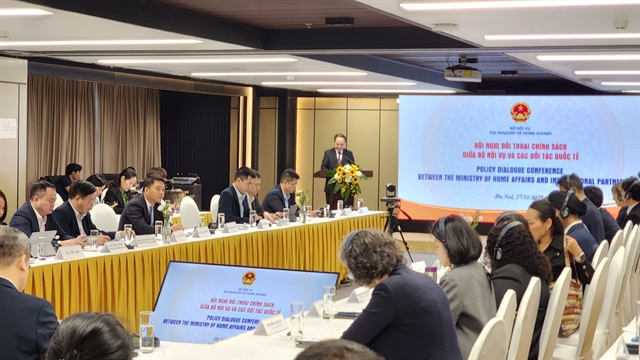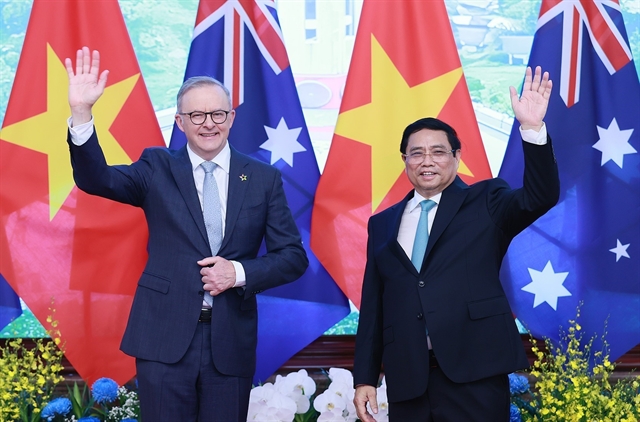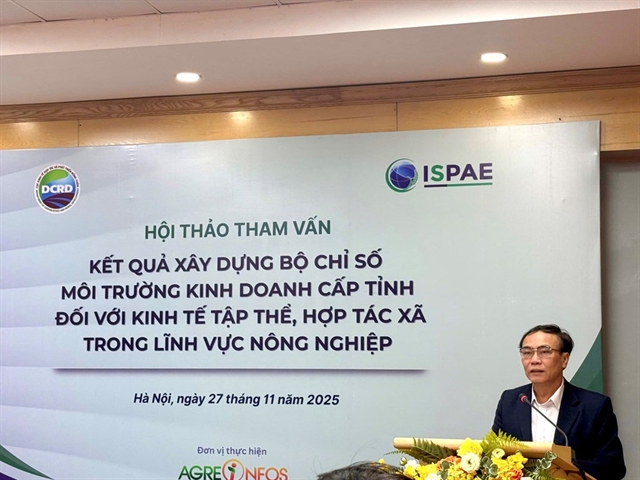 Politics & Law
Politics & Law

 |
| Prime Minister Phạm Minh Chính and Australian Prime Minister Anthony Albanese held talks in Hà Nội in June. VNA/VNS Photo |
HÀ NỘI Australia and Việt Nam are strong partners with converging strategic interests and a long-term, constructive development partnership.
This statement was made in the Southeast Asia Economic Strategy to 2040 released early this month by Australia’s Department of Foreign Affairs and Trade.
The Strategy oversees Australia’s economic relationship with 10 Southeast Asian countries and highlights Việt Nam as one of the countries projected for continued growth over the next two decades.
The document defines general and sector-specific recommendations and recognises the significant opportunities and importance of Việt Nam’s role in boosting economic engagement and two-way trade and investment in Southeast Asia and Australia.
According to the strategy, Australia and Việt Nam are strong partners with converging strategic interests, fast-growing trade, expanding education links and a long-term, constructive development partnership. Việt Nam has demonstrated impressive growth (averaging 6.7 per cent annually over the past 30 years), with projections indicating maintenance at this level for the next five years before falling to 4 per cent by 2040.
To increase Australia’s trade and investment in Việt Nam, the Strategy lists four key sectors to watch.
The first sector is agriculture and food. As the economy expands, demand for premium food and beverages will grow. Two-way trade in agriculture, fisheries and forestry surpassed A$6 billion (approximately US$4,2 billion) in 2022. Australia and Việt Nam have committed to expanding market access, including fresh fruits. Opportunities exist for investors to expand food production and add value to downstream processing industries.
The second sector is resources. Energy and resources exports make up over half of Australia’s merchandise exports to Việt Nam. Coal is the top export and Australian iron ore exports have also increased. Demand for Australia’s resources exports will grow further, including in aluminium, copper, zinc and lead. Australia’s mining sector could also assist with resources exploration, new innovations and the supply of critical minerals.
The third is green energy transition. Opportunities exist for investors in renewable energy (solar, wind and battery storage). Australian capabilities in clean energy supply chains and services will find viable markets. Việt Nam’s regulatory and investment framework and complicated approval processes remain obstacles.
The last sector is education and skills. As competition for international students is strong, Australia needs to focus on marketing, promotion and alumni support. There is potential for universities to cooperate in program delivery, staff and student exchanges, and research. Opportunities also exist in vocational education and training and for Australian schools.
Australia’s Southeast Asia Economic Strategy to 2040 affirms that significant progress has already been achieved in strengthening the relationship between Australia and Việt Nam as work continues towards the goal of establishing a Comprehensive Strategic Partnership. It recommends, in a Việt Nam action plan, the need to continue raising awareness, removing blockages, building capability, and deepening investments in the region to foster a robust partnership. — VNS




